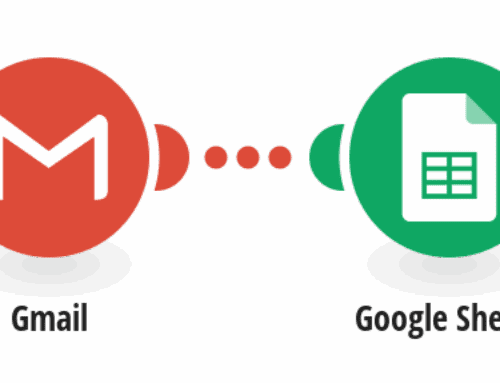Maximizing Productivity with Slack and Google Sheets
Introduction to Integration
The world of work is constantly evolving, and with it comes the need for more efficient tools and processes. That’s where integrating Slack with Google Sheets comes into play. Imagine having all your client interactions streamlined and stored neatly in a spreadsheet without you lifting a finger. Sounds like a dream? Well, it can be your reality.
This simple yet powerful integration can revolutionize how you handle client information. By automatically adding client info from Slack to Google Sheets, you save time and reduce human error. Now, let’s dive into how you can make this work for you.
Why Integrate Slack and Google Sheets?
When you think about it, Slack and Google Sheets each serve unique but complementary roles in your workflow. Slack is your hub for communication, while Google Sheets is your go-to for data management. Integrating these tools means you no longer have to juggle between apps or worry about missing out on important information.
By connecting them, you’re essentially opening up a digital conversation between two of your most crucial platforms. This not only enhances productivity but also ensures that everyone on your team is on the same page. Plus, it’s cost-effective! No need for additional software when you can leverage what you already have.
Setting Up the Automation
Step-by-Step Guide
Ready to set up this integration? Let’s get started with a step-by-step guide. First, you’ll want to launch Make. Think of it as the bridge connecting Slack and Google Sheets. Once there, search for the template that enables this integration.
After selecting the right template, follow the prompts to authenticate your Slack and Google Sheets accounts. Don’t worry if this sounds daunting; it’s actually quite intuitive. With just a few clicks, you’ll be linking your client data seamlessly between these platforms.
Customizing the Workflow
One of the best parts about this integration is how customizable it is. You can tweak the workflow to fit your specific needs. Maybe you only want certain actions in Slack to trigger an entry in Google Sheets. Or perhaps you want to filter out certain types of messages.
The beauty of this setup is that it’s flexible. You have the freedom to tailor it to ensure that it works best for your unique business model. So, sit down, think about your priorities, and adjust the settings accordingly. It’s your workflow, after all.
Benefits of Streamlining Client Information
There’s more to this integration than just convenience. It can transform how you manage client data. By having all client-related conversations logged in Google Sheets, you’re creating a centralized repository of information. This means easy access for everyone, anytime they need it.
Moreover, this setup significantly reduces the risk of losing important information. With everything systematically organized and stored, you can wave goodbye to those frantic searches through endless chat histories. Efficiency and peace of mind, all wrapped into one!
Practical Tips for Effective Use
Now that you’ve got your integration running, how do you make the most of it? First off, establish clear guidelines on what information should and shouldn’t be logged. This helps maintain consistency across your records.
Additionally, make use of Google Sheets’ features such as data filters and pivot tables to analyze the information you collect. These tools are invaluable for extracting actionable insights from your client data. Remember, the more you utilize these functionalities, the more value you gain.
Potential Challenges and Solutions
No system is perfect, and it’s important to acknowledge potential hiccups along the way. One common issue might be dealing with duplicate entries. But fear not, Google Sheets offers functions to easily spot and remove duplicates.
Another challenge could be ensuring data privacy. Always ensure that sensitive client data is handled according to privacy regulations. Educate your team on best practices to keep information safe and secure. Being proactive in addressing these challenges will save you headaches down the line.
The Future of Work: Embracing Automation
The digital world is heading towards greater automation, and integrations like Slack and Google Sheets are just the beginning. By embracing these technologies, businesses are better equipped to adapt to the ever-changing landscapes of work.
Think of automation as a silent partner, working behind the scenes to enhance productivity and efficiency. As you continue to explore and implement these solutions, you’re not just keeping up with the trends—you’re setting the stage for future success.
Conclusion
Integrating Slack with Google Sheets is a game-changer for managing client information. It streamlines communication and data collection, offering you a seamless way to stay on top of your work. By taking advantage of this integration, you’re adding a powerful tool to your arsenal, one that saves you time and boosts productivity.
Don’t let manual data entry and miscommunications hold you back any longer. Embrace this integration, customize it to suit your needs, and watch as your daily operations become more efficient than ever.
FAQs
1. How secure is the integration between Slack and Google Sheets?
The integration is secure, using OAuth 2.0 for authentication and ensuring that your credentials are encrypted. Always follow best practices to maintain data privacy.
2. Can I customize which Slack messages get logged into Google Sheets?
Yes, you can customize the workflow to specify which messages trigger an entry in Google Sheets. This flexibility allows you to tailor the integration to your needs.
3. What if I encounter duplicate entries in Google Sheets?
You can use Google Sheets’ built-in features to identify and remove duplicate entries efficiently, ensuring your data remains clean and accurate.
4. Is it possible to automate reporting with this setup?
Absolutely! You can set up Google Sheets to generate reports based on your data, making it easier to analyze and share insights with your team.
5. Will this integration work for teams of all sizes?
Yes, the integration is scalable and can benefit teams of any size, from small startups to large enterprises, enhancing collaboration and productivity across the board.








